|
1- ACTUALITES ET ACTEURS – NEWS & STAKEHOLDERS
Patrice Dole reçoit le Prix Roberval Enseignement Supérieur pour son ouvrage Les 7 fonctions de l’emballage

Le prix Roberval – catégorie enseignement supérieur 2018 – a été remis le 11 janvier 2019 à Patrice Dole, directeur du pôle emballage au CTCPA et coordonnateur de l’ouvrage Les 7 fonctions de l’emballage (éditions Lavoisier collection Tec&Doc).
Une nouvelle chaudière à la papeterie Norske Skog Golbey (88)
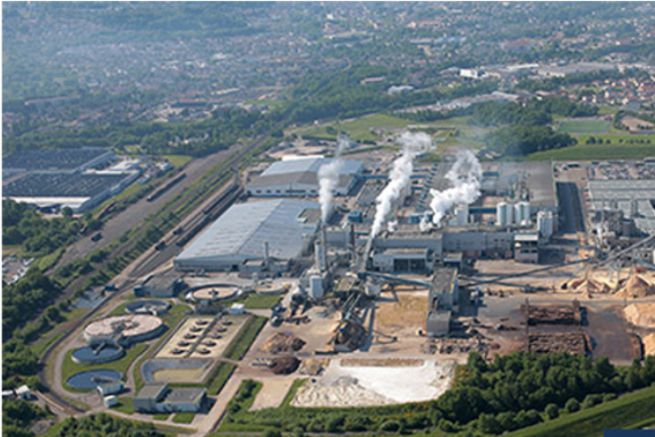
Cette installation, deux fois plus puissante de la chaudière actuelle, pourra être utilisée par toutes les usines de la Green Valley.
New Flagship EU Project Focused on Replacing Toxic Solvents with Renewable Alternatives
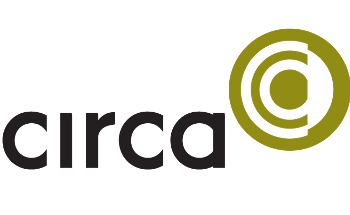
Biotechnology company Circa Group has announced it is leading the consortium for new EU project ReSolute – a flagship Horizon 2020 project set to develop the first commercial plant to produce…
Weekly Roundup: OmniActive gets health claim for Lutemax2020, Lallemand study finds impact of probiotics on gut bile acid

In nutrition news this week, OmniActive Health Technologies partnered with Shanghai Prochin to distribute its Lutemax2020 ingredient to provide its vision and cognitive boosting properties throughout Asian markets…
Fi Europe sees expansion of meat alternative samples
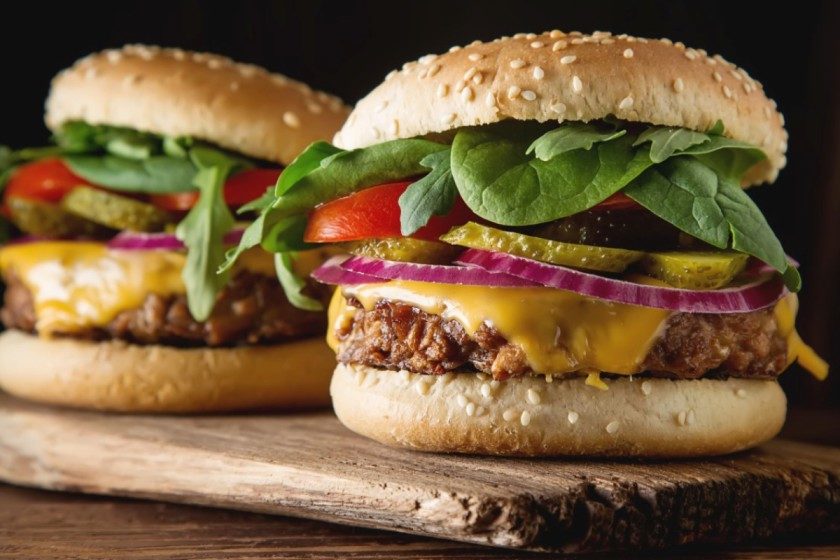
Ingredient suppliers turn to protein from wheat, peas, soybeans and almonds…
Les projets du groupe Avril pour doper sa rentabilité
Le groupe spécialisé dans la transformation du colza et du tournesol mise sur le déploiement du carburant l’Oleo100 et restructure sa filiale Saipol….
L’algoculteur au service de la ville ?

Les micro-algues portent des promesses d’innovation extraordinaires. Agriculture urbaine plus saine, dépollution ou nouveaux matériaux : c’est parfois dans les plus petits organismes que se fondent les plus grands espoirs…
Concours Vegepolys Valley : 4 jeunes pousses récompensées pour leurs innovations en faveur de la production végétale de demain
Concours Vegepolys Valley : 4 jeunes pousses récompensées pour leurs innovations en faveur de la production végétale de demain…
Didier Majou a été auditionné par la Mission d’information de l’Assemblée Nationale sur « les perturbateurs endocriniens dans les contenants plastique alimentaires, cosmétiques et pharmaceutiques »
L’Académicien, membre de la section ‘Alimentation humaine’ de l’Académie d’agriculture de France a été entendu en septembre dernier par cette Mission, créé le 1er février 2019, présidée par Michel Vialay (député des Yvelines) et dont les rapporteurs sont Claire Pitollat (députée des Bouches-du-Rhône) et Laurianne Rossi(députée des Hauts-de-Seine). Didier Majou l’a été en qualité de Directeur de l’Association de coordination technique pour l’industrie agroalimentaires (ACTIA)…
Innovation. Des entrepreneurs naissent dans la vallée du végétal

Info La Roche sur Yon Innovation: Des entrepreneurs naissent dans la vallée du végétal …
Recherche sur les micro-algues : l’or vert de demain

Aliments, médicaments, matériaux d’avenir… Les algues offrent un potentiel technologique et économique d’envergure dans les années à venir…
Les bioressources marines au service de la santé humaine et du bien-être du futur
Pour sa 10ème édition, le Forum Blue Cluster a jeté l’ancre jeudi 14 novembre à la Cité de la Voile Eric Tabarly à Lorient. Organisé par le Pôle Mer Bretagne Atlantique, ce rendez-vous annuel dédié aux biotechnologies bleues a permis d’échanger sur le potentiel des bioressources pour la santé et le bien-être et notamment des conditions nécessaires pour passer du stade laboratoire au stade industriel. Cette journée qui a réuni près de 100 acteurs académiques et industriels…
Alpol Cosmétique s’agrandit

Pour être toujours plus innovant et performant, Alpol Cosmétique s’est agrandi et a acquis de nouveaux équipements. Il s’agit d’un agrandissement majeur : 900 m² et 11 lignes dont désormais dédiés au conditionnement primaire (flacons, pots et tubes, etc), 450 m² et 6 lignes sont pour leur part dédiés au conditionnement secondaire (étui et cellophanage) dédiés…
L’expertise dans le bien-vieillir fait grandir Abyss Ingredients
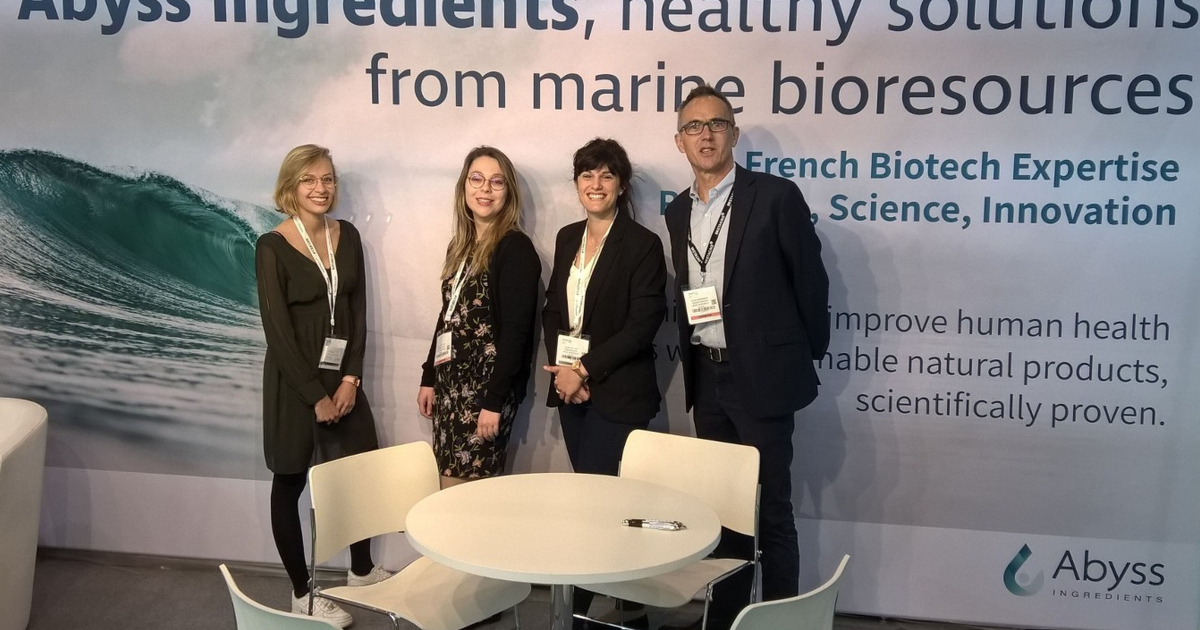
Abyss Ingredients surfe sur le créneau de la Silver Economie. Basée à Caudan et Quimper, cette société de biotechnologie valorise des coproduits marins. Levée de fonds, développement de produits à…
Cargill repositionne son amidonnerie d’Haubourdin
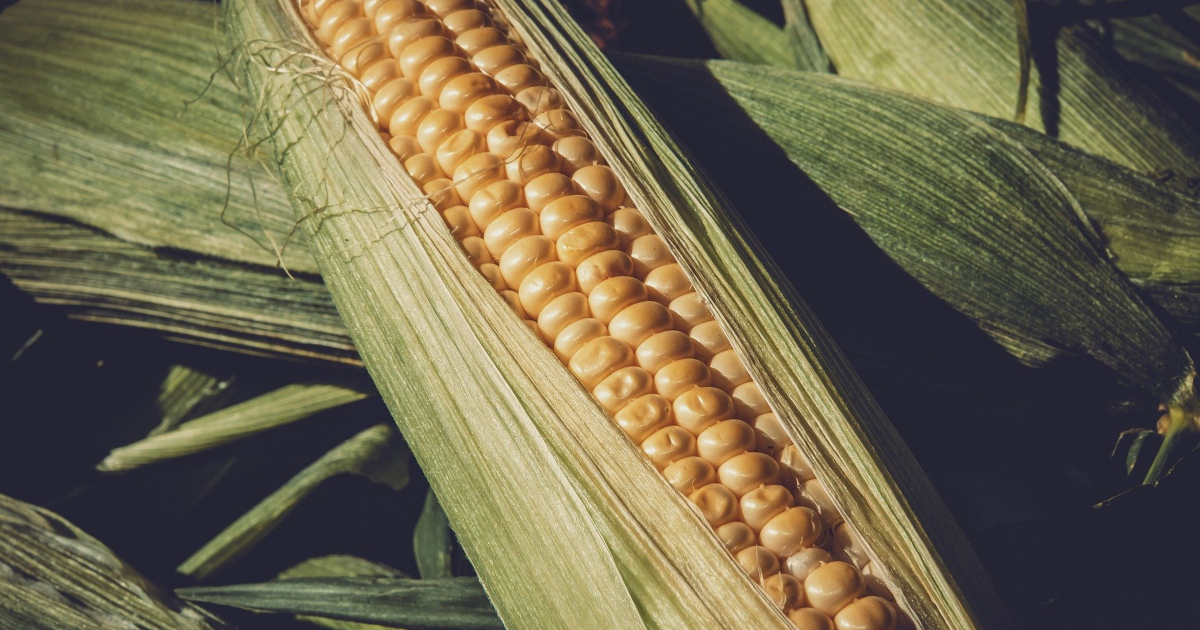
Le groupe Cargill annonce le repositionnement de son amidonnerie d’Haubourdin (Nord). En cause : ses activités d’extraction d’amidons à partir de maïs et de production d’amidons standards sont…
2- TECHNOLOGIES D’EXTRACTION ET DE PURIFICATION – EXTRACTION & PURIFICATION TECHNOLOGIES
Pilot-scale production of xylo-oligosaccharides and fermentable sugars from Miscanthus using steam explosion pretreatment
This study investigated pilot-scale production of xylo-oligosaccharides (XOS) and fermentable sugars from Miscanthus using steam explosion (SE) pretreatment. SE conditions (200 °C; 15 bar; 10 min) led to XOS yields up to 52 % (w/w of initial xylan) in the hydrolysate. Liquid chromatography-mass spectrometry demonstrated that the solubilised XOS contained bound acetyl- and hydroxycinnamate residues, physicochemical properties known for high prebiotic effects and anti-oxidant activity in…
Influence of Pulsed Electric Fields processing at high-intensity electric field strength on the relationship between anthocyanins composition and colour intensity of Merlot (Vitis vinifera L.) musts during cold maceration
Merlot grapes have high proportion of anthocyanins protected inside cell vacuoles but the thick skins limit their extractability. This study investigated the effect of a continuous Pulsed Electric Fields (PEF at 500 kg/h) system operated at high-intensity electric field strengths (>30 kV/cm) combined with energy inputs ranging from 4.7 to 49.4 kJ/L on anthocyanins extraction and colour intensity of Merlot musts during a 4-day cold maceration. Considerable amount of anthocyanins with different…
Evaluation of CO2-induced azole-based switchable ionic liquid with hydrophobic/hydrophilic reversible transition as single solvent system for coupling lipid extraction and separation from wet microalgae
The utilization of microalgae as bioenergy source was limited by the excessive cost and energy consumption during the process of lipid extraction and separation. CO2-induced switchable ionic liquids (S-ILs) with reversible hydrophobic-hydrophilic conversion were synthesized and applied for lipid extraction and separation. The reversible transition mechanism of switchable IL is due to the formation of carbamate. The novel approach based on S-ILs was developed for lipid extraction from wet…
Enhancing phenolic content in carrots by pulsed electric fields during post-treatment time: Effects on cell viability and quality attributes
The impact of pulsed electric fields (PEF) and post-treatment time on the phenolic content and quality attributes of carrots was studied. Additionally, their influence on cellular permeability and viability was analyzed. Carrots were subjected to different electric field strengths (0.8, 2 and 3.5 kV·cm-1) and number of pulses (5, 12 and 30). The largest increases in phenolic content were produced 24 h after applying 30 pulses of 0.8 kV·cm-1 (40.1%) and 5 pulses of 3.5 kV·cm-1 (39.5%)…
Development of vegetable oil-based emulsion liquid membrane for downstream processing of bio-succinic acid
Succinic acid has been recognized as a useful platform chemical that can be applied in various industries. The application of bio-based succinic acid is still limited due to high downstream processing cost. In this study, vegetable oil-based emulsion liquid membrane (ELM) process is proposed to recover succinic acid from fermentation broth. The ELM system consists of three main liquid phases; external feed, membrane, and internal stripping. The liquid membrane phase was prepared by dissolving…
A PROCESS FOR RECOVERING HIGHER SUGAR FROM BIOMASS
An advantageous process for pre-treating lignocellulosic biomass to hydrolysable polysaccharide enriched biomass with reduced amount of inhibitors of catalysis comprising steps of: providing a feedstock comprising cellulosic biomass; chopping of cellulosic biomass to have a cellulosic biomass feed material of uniform size; feeding of uniform sized feed material to a horizontal counter current extraction unit; removing excess of water from the feed material obtained from the extraction unit…
Purification step enhancement of the 2,3-butanediol production process through minimization of high pressure steam consumption
2,3-Butanediol which is produced via the fermentation of biomass, has been recognized as a sustainable and renewable liquid fuel, mainly due to its high anti-knock index and high heating value. However, high thermal energy is required to remove the excess water in the fermentation broth in order to achieve 99% purity. Recently, 2,3-butanediol has been separated and purified adopting hybrid-blower-and-evaporator-assisted distillation with significant consumption of high-pressure steam…
Recovery of bioactive compounds from beetroot leaves by supercritical CO2 extraction as a promising bioresource
Supercritical fluid extraction by using CO2 can be employed as an alternative to conventional methods for extracting functional compounds from vegetable leaves. Overall extractions curves of bioactive compounds from beetroot leaves were performed using scCO2 with ethanol as co-solvent. Yield, total phenolic compounds and antioxidant activity were determined for each extract. The best results were obtained at 35 °C/400 bar, with values of total phenolics 3370.8 microg GAE/ g d.m. and antiox…
Obtaining highly pure EPA-rich lipids from dry and wet Nannochloropsis gaditana microalgal biomass using ethanol, hexane and acetone
Saponifiable lipids (SLs), rich in eicosapentaenoic acid (EPA), were extracted and purified from Nannochloropsis gaditana biomass. Firstly, the SLs were extracted using ethanol (96% v/v). The influence of the following operational variables was studied: water content of the wet biomass, solvent/biomass ratio, homogenization pressure and temperature. SL yields of 92-99 wt% and 80-90 wt% were achieved from dry and wet biomass, respectively, under various operational conditions from batches…
Brewing coffee? – Ultra-sonication has clear beneficial effects on the extraction of key volatile aroma components and triglycerides
Ultrasound has been investigated as a new technique for brewing coffee. A two-level factorial experimental design was conducted to identify the effects of ultra-sonication on the extraction of coffee components during ultrasonically-assisted coffee brewing. Different brews were produced by aqueous extraction from roasted ground coffee beans with sonication, and without it as a control, by varying coffee concentration (5% and 10% w/w), temperature (25 and 50 °C) and sonication time (1 & 5 min)…
Optimization of extraction process of antioxidant compounds from yellow onion skin and their use in functional bread production
The major aim of this research was to demonstrate a possible use of antioxidant compounds isolated from onion skin in functional bread production. The scope of the research included a study on the extraction process of antioxidant compounds from onion skin and determination of optimal process conditions using response surface methodology, as well as the investigation of antioxidant properties of bread enriched with onion skin extract. Research showed that total yield of extraction of antiox…
Microwave Hydrodiffusion and Gravity (MHG) Extraction from Different Raw Materials with Cosmetic Applications.
Microwave hydrodiffusion and gravity (MHG) and ethanolic solid-liquid extraction were compared using selected plant sources. Their bioactive profile, color features, and proximate chemical characterization were determined. MHG extracts, commercial antioxidants, and three distinct types of thermal spring water were used in a sunscreen cream formulation. Their bioactive capacity, chemical and rheological properties were evaluated. MHG Cytisus scoparius flower extract provided the highest bio…
Utilization of Carob Fruit as Sources of Phenolic Compounds with Antioxidant Potential: Extraction Optimization and Application in Food Models.
The goal of this study was to explore the potential of carob extracts to act as lipid inhibitors in model food systems. First, the extraction efficacy of fourteen solvents on the phenolic and flavonoid contents as well as on the antioxidant activity was assessed. Results showed that the phenolic composition and antioxidant activity of the extracts were strongly affected by solvents. Subsequently, the antioxidant potential of the most promising extracts (water, methanol, acidic acetone, and…
The Effects of Oil Extraction Methods on Recovery Yield and Emulsifying Properties of Proteins from Rapeseed Meal and Press Cake.
The agricultural sector is thought to be responsible for around 30% of the anthropogenic climate change and it is well established that high meat consumption has a tremendous impact on the environment. Rapeseed is mainly used for production of vegetable oil, but press cake has high protein content with the potential for incorporation into new plant protein-based foods. Protein was recovered from press cakes generated from different oil pressing processes. Industrially cold-pressed, hot-…
Cannabinoid extraction and distillation
Raw cannabis plant material is mixed with ethanol and spun-dry to extract cannabinoids. The ethanol may be chilled before adding it to the raw cannabis plant material, and a non-polar solvent stage may be used to increase the yield of the extraction. The resulting crude oil and ethanol with the dissolved cannabinoids is separated from the raw cannabis plant material and filtered to remove particulates, waxes, lipids, fats and dissolved impurities. The ethanol is then evaporated from…
PURIFICATION OF NICOTINE
The disclosure describes methods for providing nicotine isolates, including: receiving a solution containing nicotine derived from green tobacco biomass of a plant of the Nicotiana species; converting the nicotine to nicotine sulfate; concentrating the resulting nicotine sulfate-containing solution; adjusting the pH of the resulting nicotine sulfate concentrate to a pH of about 9.5 or greater to convert the nicotine sulfate to nicotine in free base form; extracting the resulting basic…
Effect of high-power sonication pretreatment on extraction and some physicochemical properties of proteins from chickpea, kidney bean, and soybean.
Impact of high-power sonication (HPS) as pretreatment in extraction and some physicochemical properties of proteins from soybean flakes, flour of soybean, chickpea, and kidney bean was evaluated. Soybean flakes and flours from soybean, chickpea, and kidney bean were dispersed in distilled water (1.10 w/v) and sonicated at two power densities (PD) of 2.5 and 4.5 W/cm3 for 5 min continuously. Proteins were extracted at pH range 8-8.5. PD 2.5 and 4.5W/cm3 significantly increased protein extract…
Sonohydrodistillation: Innovative approach for isolation of essential oil from the bark of cinnamon
Ultrasound was incorporated with hydrodistillation to enhance the efficiency for extracting essential oil from the bark of Cinnamon (Cinnamomum zeylanicum L.) and compared with hydrodistillation. Critical parameters such as solid loading, average particle size, extraction time, amplitude, heating mantle power, and pulse ratio were assessed to observe their impact on the yield of essential oil and cinamaldehyde. Using Box-Behnken design, yield of cinnamon oil was found to be 4.64% (w/w)…
Chemical composition and bio-functional perspectives of Erica arborea L. extracts obtained by different extraction techniques: Innovative insights
Erica arborea L., also known as Estrella Gold, is traditionally used for several purposes. In this research, five different extraction techniques: accelerated solvent extraction (ASE), microwave-assisted extraction (MAE), maceration (MAC), soxhlet (SOE) and ultrasound-assisted extraction (UAE) were used to compare the total phenolic, flavonoids, total antioxidant activity and enzymatic activities of E. arborea extracts obtained different extraction techniques. The total phenolic and flavonoid…
Comparison study for the recovery of bioactive compounds from Tribulus terrestris, Panax ginseng, Gingko biloba, Lepidium meyenii, Turnera diffusa and Withania somnifera by using microwave-assisted, ultrasound-assisted and conventional extraction methods
Heat reflux (CONV), Soxhlet (SOX), microwave-assisted (MAE) and ultrasound-assisted (UAE) extraction methods, using ethanol, water and their mixtures, were studied for the recovery of bioactive compounds from Tribulus terrestris, Panax ginseng, Gingko biloba, Lepidium meyenii, Turnera diffusa and Withania somnifera. The study revealed that SOX method achieved extracts with the highest yieldTPC in terms of the total phenolic content (TPC) (66.65 ± 1.50%); MAE and UAE resulted also in extracts…
Optimization and upscaling of the supercritical carbon dioxide extraction of Solidago gigantea Ait. of an industrial relevance
The main aim of this study was to investigate the possibility of using Solidago gigantea Ait., as a source of fatty acids. S. gigantea, by contrast to rapeseed or sunflower seeds, is not commonly used plant material to obtain these compounds. For that purpose, the proper optimization of supercritical carbon dioxide extraction (SFE-scCO2) of S. gigantea at quarter-technical plant was investigated to provide the highest concentration of FAME. SFE-scCO2 is a green technology and it is very…
Ultrasound-Assisted Extraction for the Recovery of Carotenoids from Guava’s Pulp and Waste Powders.
In this work, lycopene- and β-carotene-rich extracts were obtained from guava’s pulp and waste powders using maceration (ME), ultrasonic bath (BUAE, 25 °C for 30 min), and ultrasonic probe (PUAE, 25 °C for 5 min). Extracts were evaluated for total carotenoid content, antioxidant capacity, color, and lycopene and β-carotene content by HPLC-DAD. Bath-type ultrasound-assisted extraction (BUAE) was the best technique to obtain lycopene from guava pulp (135.0 mg 100 g-1) and waste…
Application of compressed fluid-based extraction and purification procedures to obtain astaxanthin-enriched extracts from Haematococcus pluvialis and characterization by comprehensive two-dimensional liquid chromatography coupled to mass spectrometry.
The green microalga Haematococcus pluvialis has been widely studied due to its capacity to accumulate great amounts of astaxanthin, a high-value carotenoid with biological activities. In the present work, two green compressed fluid-based processes, pressurized liquid extraction (PLE) and supercritical antisolvent fractionation (SAF), are integrated to obtain an astaxanthin-enriched extract from this microalga. PLE was carried out using pressurized ethanol as solvent, for 20 min, at 10 MPa…
A PROCESS FOR THE SEPARATION AND PURIFICATION OF PHYCOBILIPROTEINS
The present invention relates to a membrane chromatography process for selectively separating and purifying phycobiliproteins starting from aqueous biomasses of cyanobacteria and algae that, in a short time and at reduced cost, allows to obtain phycobiliproteins with a high degree of purity for use in pharmaceutical, cosmetic, or food compositions or as reagents for research…
The Quest for Phenolic Compounds from Macroalgae: A Review of Extraction and Identification Methodologies.
The current interest of the scientific community for the exploitation of high-value compounds from macroalgae is related to the increasing knowledge of their biological activities and health benefits. Macroalgae phenolic compounds, particularly phlorotannins, have gained particular attention due to their specific bioactivities, including antioxidant, antiproliferative, or antidiabetic. Notwithstanding, the characterization of macroalgae phenolic compounds is a multi-step task, with high…
Optimization of choline chloride-glycerol based natural deep eutectic solvent for extraction bioactive substances from Cinnamomum burmannii barks and Caesalpinia sappan heartwoods.
Indonesian cassia (Cinnamomum burmannii Blume) is commonly used as a condiment. It reportedly contains a number of major phytochemical constituents such as trans-cinnamaldehyde and coumarin. Sappan wood (Caesalpinia sappan) is a native plant of Southeast Asia that contains brazilin, a widely known red pigment. This study aimed to determine the optimal extraction conditions using a choline chloride-glycerol (ChCl-glycerol)-based natural deep eutectic solvent (NADES) to obtain greater trans-…
One-Step Preparative Separation of Phytosterols from Edible Brown Seaweed Sargassum horneri by High-Speed Countercurrent Chromatography.
Sargassum horneri, a sargassaceae brown alga, is one of the main species in the subtidal seaweeds flora extensively distributed in the Yellow and East China Sea. It has been proven that the phytosterols are an important class of bioactive substances in S. horneri. In this work, a counter-current chromatography approach is proposed for preparative separation of phytol and two analogue sterols from a crude extract of S. horneri. A two-phase solvent system composed of n-hexane-acetonitrile…
Fractioned SFE of antioxidants from maritime pine bark
Maritime pine (Pinus pinaster) is an important portuguese forest species and its bark is an abundant furniture industry residue. In this work, fractioned supercritical fluid extraction (FSFE) experiments were carried out using CO2 and CO2 + EtOH (10%) mixtures in two consecutive steps. Different pressures (from 10 up to 30MPa) and temperatures (30, 40 and 50°C) were assayed. FSFE extracts were compared with hydrodistillation (HD) and Soxhlet (SoE) extracts.
COMPARISON OF ACCELERATED SOLVENT EXTRACTION AND SUPERCRITICAL FLUIDS EXTRACTION OF SPRUCE BARK
The aim of the study was to compare the efficiency of spruce bark extraction processes with a conventional extraction technique. Supercritical fluid extraction (SCE) was carried out as static extraction for 60 min at 7000 psi with pure CO 2 at 60, 100 and 140°C with 96% ethanol as co-solvent. Accelerated solvent extraction was carried out for three cycles for 6 min at 80, 100 and 120°C with 96% ethanol and n-hexane as solvent. Yields were determined by weighting and the extracts were charact…
Highly Efficient Extraction of Ferulic Acid from Cereal Brans by a New Type A Feruloyl Esterase from Eupenicillium parvum in Combination with Dilute Phosphoric Acid Pretreatment.
Feruloyl esterase (FAE) is a critical enzyme in bio-extraction of ferulic acid (FA) from plant cell wall. A new FAE (EpFAE1) encoding gene was isolated from Eupenicillium parvum and heterologously expressed in Pichia pastoris cells. Based on phylogenetic tree analysis, the protein EpFAE1 belongs to type A of the seventh FAE subfamily. Using methyl ferulate as substrate, the optimum temperature and pH for the catalytic activity of EpFAE1 were 50 °C and 5.5, respectively. The enzyme…
Simultaneous extraction and separation of oil, proteins, and glucosinolates from Moringa oleifera seeds
Moringa oleifera is a worldwide cultivated edible and medicinal plant. Its seeds are rich in oil, proteins, and glucosinolates. A practical method was developed to simultaneously extract and separate the three groups of substances from M. oleifera seeds. Smashed seed material was loaded into columns with petroleum ether: ethanol 8:2 (PE-ethanol) and eluted sequentially with 4.8-fold PE-ethanol to extract oil, and 10.8-fold water to extract proteins and glucosinolates. More than 95% of oil…
Biocompatible protic ionic liquids-based microwave-assisted liquid-solid extraction of astaxanthin from Haematococcus pluvialis
Haematococcus pluvialis, a green microalga, can accumulate high level of astaxanthin which is regarded as a super antioxidant extensively used in cosmetics, poultry, food, and pharmaceutical industries. The difficult point for extraction of astaxanthin is how to break the thick resistant cell walls of Haematococcus pluvialis effectively. In this work, this difficulty was successfully solved by the biocompatible protic ionic liquids-based microwave-assisted liquid-solid extraction (PILs-MALSE)…
The use of polyelectrolytes for simultaneous dewatering and fractionation of microalgal proteins, lipids, and pigments
For making microalgae-based bio-refinery platform sustainable and economically viable, it is necessary to simplify the harvesting process while enabling co-extraction of high-value bio-products from biomass. In this work, the ability of poly-diallyl dimethylammonium chloride (polyDADMAC) to dewater and extract cellular debris, lipids, and pigments to hexane phase while retaining protein fraction in the aqueous phase was investigated. It was observed that different components could…
Comparison of several methods for effective lipid extraction from wet microalgae using green solvents
A comparative study of lipid extraction from microalgae was performed using the Soxhlet, Bligh and Dyer, Folch, and Hara and Radin methods, with the green solvents 2-methyltetrahydrofuran (2-MeTHF)and cyclopentyl methyl ether (CPME), which have also been used in previously published studies. Extractions were performed with the microalgae Chlorella pyrenoidosa at 65.71% moisture. The Bligh and Dyer methodology, using the solvents 2-MeTHF:isoamyl alcohol (2:1 v/v)and CPME:methanol (1:1.7 v/v)…
A comparative account of extraction of oleoresin from Curcuma aromatica Salisb by solvent and supercritical carbon dioxide: Characterization and bioactivities
Extracts of Curcuma aromatica Salisb rhizomes are traditionally used in the Indian sub-continent in herbal and cosmetic applications. Composition of extracts and their resulting bioactivities is dependent on the extraction technique. The present study compares yield, composition, and bioactivities of extract from C. aromatica by Soxhlet and supercritical carbon dioxide (SC-CO2) extraction. Extraction using ethyl acetate for 240 min gave maximum yield (8.34 ± 0.2% w/w) among the solvents…
Continuous nanosecond pulsed electric field treatments foster the upstream performance of Chlorella vulgaris-based biorefinery concepts
Nanosecond pulsed electric field treatment (nsPEF) is an innovative, technology-driven, and resource-efficient approach to foster the upstream performance of microalgae-based biorefinery concepts to transform microalgae into economic more viable raw materials for the biobased industry. A processing window applying three treatments of 100 ns, 5 Hz, and 10 kV cm-1 to industrially relevant phototrophic Chlorella vulgaris in the early exponential growth phase significantly increased biomass…
Integrated process for extraction and formulation in emulsions of active molecules from fresh passion fruits (Passiflora edulis Sims)
Intensified green processes were investigated to extract several classes of active molecules from fresh purple passion fruits, and to prepare emulsions directly by extrusion for the fruit comprehensive utilization. A thermo-mechanical treatment was carried out through a discontinuous process from the edible part and through a continuous process by twin-screw extrusion using the whole fruit. Only mechanical energy was applied to the materials to generate a liquid fraction (filtrate) and a …
Process of fruit peel waste biorefinery: a case study of citrus waste biorefinery, its environmental impacts and recommendations
Fruit peels are a rich source of cellulose, hemicellulose, phenolic compounds, and terpenic compounds. Thus, they have the potential to be a novel renewable, sustainable, and low-cost raw material (source) for the production of several value-added products based on framework and concepts such as waste hierarchy that includes biofertilizers, dietary fiber, animal feed, industrial enzymes, substrate for the bioactive compounds production, synthesis of nanomaterials, and clean energy (from residu..
Application and optimization of ultrasound-assisted deep eutectic solvent for the extraction of new skin-lightening cosmetic materials from Ixora javanica flower.
The high demand for cosmetics has had a great impact on the development of innovative products in the cosmetic industry. The availability of raw materials has become a common problem in the cosmetic industry. Materials from nature can act as alternative sources, such as Ixora javanica. Several studies have shown the potential of I. javanica as an antioxidant and skin lightening agent. The objectives of the present study were to develop and optimize a green ultrasound-assisted deep eutectic…
Biorefinery of Dunaliella salina: Sustainable recovery of carotenoids, polar lipids and glycerol.
Dunaliella salina is well-known for its high content in carotenoids and glycerol. Nevertheless, Dunaliella salina has also a high content in lipids, including polar lipids, which are suitable for nutraceutical/cosmeceutical applications. This work proposes a sustainable process to maximise the potential of Dunaliella salina for the production of distinct fractions of carotenoids, glycerol, polar lipids and proteins, which may contribute to improve the revenues of the microalgae industry…
Box-Behnken Design for Extraction Optimization Followed by High Performance Countercurrent Chromatography: Production of a Flavonoid-enriched Fraction from Achyrocline Satureioides.
The biological properties of Achyrocline satureioides have been mostly ascribed to its major flavonoids quercetin (QCT), luteolin (LUT), and 3-O-methylquercetin (3OMQ). The present study aimed to optimize the extraction by dynamic maceration of the major phenolic compounds in order to obtain in a subsequent step a flavonoid-enriched fraction (FEF) using high performance countercurrent chromatography (HPCCC). A 3-level Box-Behnken design (BBD) was applied to maximize the extraction of…
Extraction of Polysaccharide from Dendrobium nobile Lindl. by Subcritical Water Extraction.
Subcritical water extraction (SWE) uses hot compressed water as an effective solvent for both polar and nonpolar compounds and has been developed as an environmentally benign extraction technology for natural materials. Polysaccharides as one of the main ingredients in Dendrobium plants showed obvious biological activity. Thus, SWE of polysaccharides obtained from Dendrobium nobile Lindl. was investigated in this work. The response surface methodology (RSM) was combined with a Box-Behnken…
Green Chemistry Extractions of Carotenoids from Daucus carota L.-Supercritical Carbon Dioxide and Enzyme-Assisted Methods.
Multiple reviews have been published on various aspects of carotenoid extraction. Nevertheless, none of them focused on the discussion of recent green chemistry extraction protocols, especially for the carotenoids extraction from Daucus carota L. This group of bioactive compounds has been chosen for this review since most of the scientific papers proved their antioxidant properties relevant for inflammation, stress-related disorders, cancer, or neurological and neurodegenerative diseases…
Biosurfactant trehalose lipid-enhanced ultrasound-assisted micellar extraction and determination of the main antioxidant compounds from functional plant tea.
Hydrosoluble trehalose lipid (a biosurfactant) was employed for the first time as a green extraction solution to extract the main antioxidant compounds (geniposidic acid, chlorogenic acid, caffeic acid and rutin) from functional plant tea (Eucommia ulmoides leaves). Single-factor tests and response surface methodology were employed to optimize the extraction conditions for ultrasound-assisted micellar extraction combined with ultra-high-performance liquid chromatography in succession.
Ultrasound-Assisted Weak-Acid Hydrolysis of Crystalline Starch Nanoparticles for Chemically Enhanced Oil Recovery.
Ascorbic acid was used for the first time to synthesize crystalline starch nanoparticles (CSNP). The physical properties of the CSNP were investigated. Rheological properties of the crystalline starch nanofluid (CSNF) were compared with native cassava starch (CS) and commercial polymer xanthan. Interfacial properties of the CSNF at the interface of oil and water (O/W) were investigated at different concentrations and temperatures. Wettability alteration efficiency of CSNF on oil-wet…
Recovery of Natural Antioxidants from Agro-Industrial Side Streams through Advanced Extraction Techniques.
Large amounts of agro-industrial waste are being generated each year, leading to pollution and economic loss. At the same time, these side streams are rich source of active compounds including antioxidants. Recovered compounds can be re-utilized as food additives, functional foods, nutra-/pharmaceuticals, cosmeceuticals, beauty products, and bio-packaging. Advanced extraction techniques are promising tools to recover target compounds such as antioxidants from agro-industrial side streams…
3. AUTRES TECHNOLOGIES ET INNOVATIONS – OTHER TECHNOLOGIES & INNOVATIONS
Biopotentiality of leaf and leaf derived callus extracts of Salacia macrosperma Wight. — An endangered medicinal plant of Western Ghats
Standardization of protocol for induction of callus in Salacia macrosperma Wight was achieved with 98% in combination of 2, 4-dichlorophenoxyacetic acid and benzylaminopurine at 2.5 ± 1.5 mg mL−1 concentrations. This was followed by sequential solvent extraction of leaf and its callus and then subjected for phytochemical analysis. The biochemical test revealed the presence of varied classes of phytoconstituents both in leaf and callus extracts. The antimicrobial activities of the crude…
Processing of extracted olive oil pomace residue by hydrothermal or dilute acid pretreatment and enzymatic hydrolysis in a biorefinery context
In this work, a residue from olive oil industry, i.e., extracted dry olive pomace (EOP) is studied for valorization into fermentable sugars and other added-value compounds. EOP processing is based on a first water extraction step at 100 °C during 30 min, followed by Liquid Hot Water (170,190 °C and 210 °C) or dilute acid (DA) pretreatment [same temperatures in sulfuric acid 1% and 2% (w/v)], and enzymatic hydrolysis (EH) at laboratory scale using commercial enzymes. The results show that…
Identification of microalgae biorefinery scenarios and development of mass and energy balance flowsheets
The notion of bioeconomy is at the basis of recent European strategies aiming at conciliating economic growth and sustainability. Consequently, extensive research has been conducted on biobased solutions such as microalgae products. Numerous initiatives to commercialize microalgae have been launched but few of them were successful. Algae biofuel is the most obvious illustration with its promises as energy supply but faces many challenges to become economically competitive…
Initial evaluation of six different brown algae species as source for crude bioactive fucoidans
The fucose-containing sulfated polysaccharides (syn. fucoidans) from brown seaweeds exhibit multiple biological activities. The aim of the present study was to evaluate the suitability of crude fucoidans from six different brown algal species for further research and development. For this, fucoidans were extracted from Fucus vesiculosus (F.v.), F. serratus (F.s.), F. evanescens (F.e.), Dictyosiphon foeniculaceus (D.f.), Laminaria digitata (L.d.), and Saccharina latissima (S.l.) and compared…
A comparison of harvesting and drying methodologies on fatty acids composition of the green microalga Scenedesmus obliquus
Harvesting and drying processes are still obstacles in the microalgae production chain. In this study, a combination of different harvesting and drying methods for Scenedesmus obliquus was proposed. S. obliquus was cultivated in a pond raceway for 15 days until reaching stationary phase. The culture was separated by different harvesting methods (centrifugation and flocculation) and drying methods (freezing, freeze-drying and oven drying), each combination in triplicate. Flocculation…
Energy efficient dewatering of far offshore grown green macroalgae Ulva sp. biomass with pulsed electric fields and mechanical press
Offshore macroalgae biomass production is a promising, yet challenging, pathway to provide feedstock for biorefineries. In this work, a device and a process for dewatering offshore grown biomass of the green macroalgae Ulva sp. using high-voltage pulsed electric fields (PEF) was developed. Ulva sp. was cultivated attached to fish cages 15 km offshore. Increasing the applied voltage from 250 V to 500 V and invested PEF energy from 9.3 ± 0.4 J g-1 FW to 54.6 ± 0.2Jg-1 FW increased the extracted…
Bioactivity, biocompatibility and phytochemical assessment of lilac sage, Salvia verticillata L. (Lamiaceae) – A plant rich in rosmarinic acid
The plants from genus Salvia, as one of the largest genus in Lamiaceae family, are frequently in use for various purposes, as foods, in cosmetic industry, or in traditional and official medicine. Salvia verticillata L. (liliac sage) is one of sidelined sage species with potential bioactivity, reported in traditional medicine. The aim of this study was to acquire a phytochemical profile of the methanol extract obtained from S. verticillata aerial parts and to evaluate its antioxidant, antimicr…
Integral valorization of fruit waste from wine and cider industries
Agro-industrial waste disposal is becoming a key issue as a consequence of the increasing number of by-products generated. Within this context, this work proposes an integral, effective and sustainable use of biowaste from regional food industries as a drive towards cleaner production. Apple and grape waste from cider and wine industries was valorized by extracting bioactive compounds and pyrolyzing/gasifying the residual solid to obtain value-added chemical products, such as biochar…
Optimization of glucose yield from potato and sweet lime peel waste through different pre-treatment techniques along with enzyme assisted hydrolysis towards liquid biofuel
In this work, potato and sweet lime peels otherwise considered as waste were used as substrates for producing glucose. Different pre-treatment processes were carried out and the best conditions yielding higher amount of glucose concentration were further hydrolysed by enzyme. The pre-treated extract at 80 min in case of dilute acid hydrolysis with autoclaving conditions gave higher glucose concentration amongst all the pre-treatment processes for both the peels and hence considered for…
Antioxidant and anti-inflammatory activities of an anti-diabetic polysaccharide extracted from Gynostemma pentaphyllum herb.
This work aimed to determine the antioxidant and anti-inflammatory effects of an anti-diabetic polysaccharide (GPP) extracted from Gynostemma pentaphyllum herb on diabetic mice. In vitro antioxidant assays showed that the DPPH radical, hydroxyl radical, superoxide anion, and ABTS radical scavenging activities of GPP increased in a dose-dependent manner. Animal experiments demonstrated that GPP could efficiently reduce the body weight and fasting blood sugar of diabetic mice and decrease the…
Valorization of Euterpe edulis Mart. agroindustrial residues (pomace and seeds) as sources of unconventional starch and bioactive compounds.
Juçara fruit pomace is one of the most abundant byproducts of the pulp-making process, generally discarded despite their attractive nutritional content. In this sense, this study aimed to investigate the potential of juçara fruit pomace as an alternative source of starch and natural dyes. Starch extracted from juçara seed (JS) was characterized in approximate composition, crystallinity, thermal profile, morphology, and equilibrium moisture data. Total phenolic content, anthocyanins content…
Chemical Characterization and Antioxidant Properties of Ethanolic Extract and Its Fractions from Sweet Potato (Ipomoea batatas L.) Leaves.
Sweet potato (Ipomoea batatas L.) leaf is a natural source of phenolic compounds with strong antioxidant activity and potential utility as an antioxidant. The aim of this study was to evaluate the polyphenol composition and antioxidant activities of ethanol extracts and their various solvent-partitioned fractions (petroleum ether, ethyl acetate, and aqueous fraction) from sweet potato leaves and petioles. Seven caffeoylquinic acid (CQA) derivatives and four flavonoids were detected in sweet…
Chemical composition, antioxidant capacity, toxicity and antibacterial activity of the essential oils from Acantholippia deserticola (Phil.) Moldenke (Rica rica) and Artemisia copa Phil. (Copa copa) extracted by microwave-assisted hydrodistillation
Acantholippia deserticola (Rica rica; RR) and Artemisia copa (Copa copa; CC) are herbs native to the Chilean highlands and have historically been used for medicinal purposes by the Atacameños people. The essential oils were analized by GC/MS, the principal compounds found in RR essential oil (RR_EO) were β-thujone (45%), β-linalool (16%), and eucalyptol (9%) and were butyric acid (38%), γ-terpinene (16%), and cis-2-menthenol (12%) in CC essential oil (CC_EO). The total polyphenol content…
Enhanced production of sulforaphane by exogenous glucoraphanin hydrolysis catalyzed by myrosinase extracted from Chinese flowering cabbage (Brassica rapa var. parachinensis)
Sulforaphane formation via endogenous route is known to be less effective. Exogenous hydrolysis of the sulforaphane precursor is therefore of interest. Here, myrosinase activity was first determined to identify a suitable source of the enzyme from selected Brassica vegetables. Extracted enzyme was then evaluated for its thermal stability to establish a condition for extraction. Chinese flowering cabbage was selected as the source of myrosinase; suitable extraction condition was at 40 °C for…
Influence of supercritical carbon dioxide treatment on the physicochemical properties of cellulose extracted from cassava pulp waste
This study aims at investigating the influence of supercritical carbon dioxide (ScCO2) treatment on the physicochemical properties of cassava–based cellulose. The ScCO2 treatment was performed in a high-pressure vessel by exposing the cellulose to ScCO2 without a co-solvent at variable pressure (P) ranging from 8 MPa to 20 MPa for 60 min. The system temperature (T) was set to 40 °C, 60 °C and 80 °C. Subsequently, a field emission scanning electron microscopy analysis showed that the average…
Phytochemical and antioxidant studies of Cleome heratensis (Capparaceae) plant extracts
Background: In this research, different active phytochemical constituents present in Cleome heratensis (C. heratensis) from Capparaceae family were investigated. Moreover, the fatty acids present in the seed and aerial parts of the plant were identified by gas chromatography (GC) after esterification of the oil. Antioxidant activity of the aerial parts and seed of C. heratensis methanolic extract over 2,2′-diphenylpicryl-1-hydrazyl (DPPH) was investigated using ultraviolet-visible (UV-Vis)…
Supercritical CO2 extraction and solvent-free rapid alternative bioepoxy production from spent hens
Spent hens are by-product of egg and hatching egg production and a potential source of renewable compounds. In this study, lipids were extracted using supercritical carbon dioxide (SC-CO2) at 50-70°C, 30-50MPa, and constant CO2 flow rate of 1L/min. The maximum yield of total lipid 37 ±0.4 % (w/w) with 91.4% recovery was obtained at 50MPa/70°C. Fatty acid compositional analysis was performed using gas chromatography with flame ionization detector (GC-FID). Helium ion microscopy (HIM)…
Applications of Tea (Camellia sinensis) and its Active Constituents in Cosmetics.
Studies on the cosmetic applications of plant extracts are increasingly appearing in the scientific literature, which is due to the growing popularity of skincare products around the world. In the light of the observed changes, a return to natural treatment and skincare with cosmetics free of harmful substances or toxic preservatives is visible. Currently, tea extracts, due to their rich composition and various biological actions, play an important role among the dietary supplements and cosm…
Resveratrol:A review of plant sources, synthesis, stability, modification and food application.
Resveratrol, a stilbene molecule belonging to the polyphenol family, is usually extracted from a great many natural plants. The technologies of preparation and extraction methods are developing rapidly in resveratrol. As resveratrol has many beneficial properties, it has been widely utilized in food and medicine industry. In terms of its structure, resveratrol is susceptible to degradation and can undergo chemical changes during food processing. Therefore, different studies have paid more…
Aperçu du marché Coloration naturelle mondial 2019 – Yunnan Rainbow Biotech, Chenguang Biotech Group, Synthite Industries, DDW, Naturex
Le Marché mondial des Coloration naturelle 2019 est une étude de marché complète qui offre une vue d’ensemble du marché, des performances du secteur, des tactiques contemporaines, des luttes concurrentielles, des facteurs de croissance essentiels. Elle présente également l’analyse de la chaîne de valeur, l’analyse des cinq forces de Porter, l’analyse SWOT et plus encore. Le Rapport inclue aussi des informations descriptives sur les protocoles de fabrication, les coûts, les projets et politiques de
Alginates Market Demand & SWOT Analysis By 2025: Key Players CP Kelco, Ingredients Solutions, Algaia, Marine Biopolymers – AnalyticSP
A New Research on the Global Alginates Market was conducted across a variety of industries in various regions to produce more than 150 page reports. This study is a perfect blend of qualitative and quantifiable information highlighting key market developments, industry and competitors’ challenges in gap analysis and new opportunities and may be trending in the Alginates market. Some are part of the coverage and are the core and emerging players being profiled CP Kelco, Ingredients Solutions, Algaia,
Global Natural Colorants Market Size |Incredible Possibilities and Growth Analysis and Forecast To 2023 | Chr. Hansen A/S, DD Williamson and Co., Naturex SA, Sensient Technologies Corp., etc
The market research report on Global Natural Colorants Market provides deep insights about the leading competitors operating in the industry, market segmentation, product types, applications, and the mentioned key geographies, as well as the market volume and capacity, production, consumption, revenue, market dynamics, and forecasts till 2023. The research report comprises of a brief summary of the market trends and development patterns that may help the leading players functioning in the indust
Marché mondial des suppléments de santé 2020-2026 Croda International, Herblife International, Glanbia, Abbott Laboratories, Alticor, Bayer
Les prévisions du marché des suppléments de santé à l’horizon 2026 se composent de faits complets ainsi que de l’évaluation des principaux fabricants, de la gamme de produits, du type et des utilisateurs finaux. Le rapport sur les suppléments de santé contient des détails précieux qui peuvent être segmentés en fonction de la zone de production des suppléments de santé, des principales entreprises et du type de produit, afin de proposer un examen bien préparé et facile à appréhender de l’entreprise
Algue et additif alimentaire Marché Rapport de recherche 2025 sur la taille de lindustrie, les tendances, la croissance mondiale, les perspectives et les prévisions
Le rapport de recherche sur le marché mondial de 2019 de Algue et additif alimentaire présente une analyse approfondie de la taille du marché, de la croissance, de la part, des segments, des fabricants et des technologies, des tendances clefs, des facteurs…
Étude approfondie du marché des enzymes d’hydrolysat de protéines 2020 AB Enzymes, Royal DSM, Novozymes
Une étude récemment publiée sur le rapport du marché des enzymes d’hydrolysat de protéines décrit l’analyse approfondie des différentes tendances de commercialisation et des facteurs de croissance de l’industrie mondiale des enzymes d’hydrolysat de protéines. Ce rapport fournit également des informations standard et complètes relatives à un large éventail d’aspects marketing essentiels de l’industrie des enzymes d’hydrolysats de protéines, comme plusieurs applications commerciales, la marge béné
Aperçu du marché Fibre prébiotique mondial 2019 – Beneo, Sensus, Cargill, Ingredion, Cosucra Groupe Warcoing

Le rapport sur l’état et les tendances du marché mondial de la Fibre prébiotique 2019-2026 offre…
Flux Pectinases Marché Rapport de recherche 2025 sur la taille de lindustrie, les tendances, la croissance mondiale, les perspectives et les prévisions
Le rapport de recherche sur le marché mondial de 2019 de Flux Pectinases présente une analyse approfondie de la taille du marché, de la croissance, de la part, des segments, des fabricants et des technologies, des tendances clés, des facteurs de marché, de…
Congrès Lipids & Cosmetics : au coeur de l’innovation et de la recherche

Congrès Lipids & Cosmetics : au cœur de l’innovation et de la recherche. Le congrès scientifique Lipids & Cosmetics se tiendra pour sa 2ème édition les 29 et 30 janvier 2020 à Bordeaux. La Région Nouvelle-Aquitaine, l’ITERG et la Cosmetic Valley en partenariat avec l’Université de Bordeaux vous proposent d’explorer les dernières recherches et innovations dans les domaines de la physiologie cutanée, des procédés oléo-chimiques, des techniques d’extraction, de purification et analytiques ainsi…
Future food: The market for algal oil is brimming with potential for future innovation, say experts

What is the future of food? This question has perhaps never been more relevant than now, as climate change chaos has ensnared the global population. Permeating these chaotic times are vital questions about feeding a growing…
Un certain retard à l’allumage pour les carburants de 3ème génération
Un nouveau souffle pour les biocarburants grâce aux micro-algues Toutes générations confondues, la France est le quatrième pays producteur mondial de biocarburants (5 % de la production mondiale) après les États Unis, le Brésil et l’Allemagne, avec plus de 2 millions…
Booming, blooming micro-algae
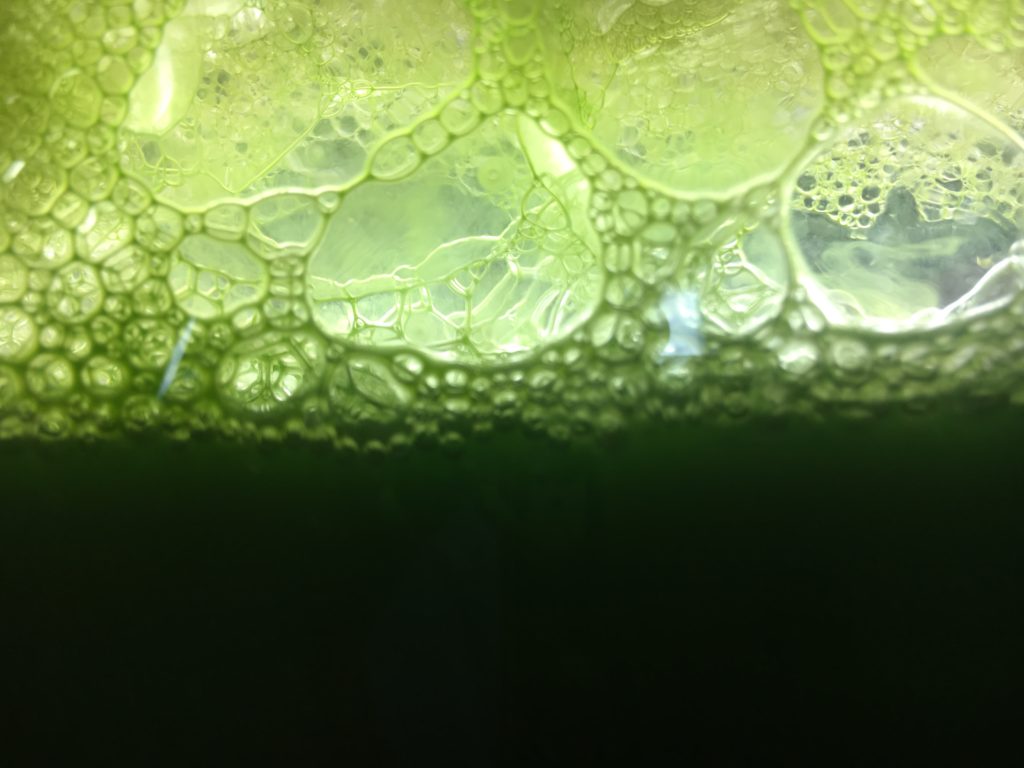
Hundreds of thousands of species of micro-algae float through the world’s waterways. Just a fraction have been categorised or studied. It leaves an imaginarium of possibilities to explore. For decades, the hottest and most tantalising possibility centered round biofuels.
|
|
|